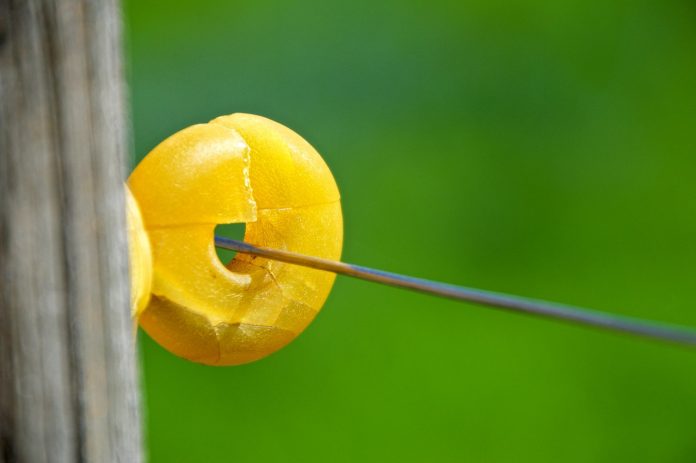Good fence makes good neighbors, but a good fence needs a good energizer. To have an effective electric fence to keep livestock contained and predators out is determined by what type of fence you have, the energizer and proper grounding.
Types
The are several types of energizers with some nice features on the market today. The 110V plug-in type energizers typically will be the most economical for the most power.
Battery energizers are portable and can be used in remote areas when electric is not available. Generally, a 12V rechargeable “D” cell or a 9V disposable batteries is used. Solar energizers can also be used in remote areas, but typically have the highest cost.
Multi-powered energizers, which combine any or all the previously mentioned types, are great feature if you are moving livestock from areas that have electric power to others that do not.
Selection
The first step in selecting an energizer for your operation should include knowing what distance of wire you will be electrifying. If you have a 1-mile fence and are electrifying three wires, you need an energizer that is rated for 3 miles. Distance is not the only factor; you also need to consider how much vegetation is touching wires and how many and species of livestock you have.
The only true way to compare different chargers is by looking at the stored joules. The higher the stored joule rating, the better the energizer will be able to maintain a charge when a fence is shorted out by weeds or there is fault in the fence.
Energizers are available from 0.1 to 100 stored joules. Typically, the higher the rating the more expensive they are, but do not buy on price alone. Getting an energizer with the highest rating you can afford often pays in the long run, especially if you plan to add more fence or paddocks.
Lastly, you should also pay attention to pulse length of the energizer. A good energizer will have a pulse length for 0.0003 seconds. Lower quality energizers with a pulse of 0.003 to 0.3 seconds may allow more heat to build up in the wire causing fires and shorten the life of poly wires and tapes.
Installation
Once you have selected your energizer you need to properly install it. The most important thing to do when installing an electric fence is to correctly ground it. This is probably the most common problem with underperforming electric fences. Manufacturers will give you recommendations as to how many ground rods should be installed.
Rule of thumb is to place ground rods 10 feet apart, a minimum of three rods regardless of stored joule rating, 6 feet minimum length and connecting all ground rods with one wire. The more stored joules, the more ground rods needed; an energizer with 100 stored joules may require 10 ground rods or more.
The most accurate way to determine if you have your system properly grounded is to use a voltmeter. This procedure is often described within your owner’s manual and can be found online. To prevent stray voltage and damage to your energizer, you should not place fence ground rods within 40-50 feet of other electrical ground connections or metal water lines. Just a few volts will affect livestock water intake and performance.
Some new features available with energizers is a remote control that can give the current being sent through the wire, indicate which direction the fault is located and shut the energizer off. The ability to shut an energizer off while moving livestock, to fix a short or move temporary fence saves a great deal of time and money.
Finally, be sure to properly train your livestock to electric fence, especially if new livestock are being introduced to your facility. You don’t want to rush this process and do it within a low stress, securely fenced area. Using offset wire inside a permanent fence will give the safest results.













